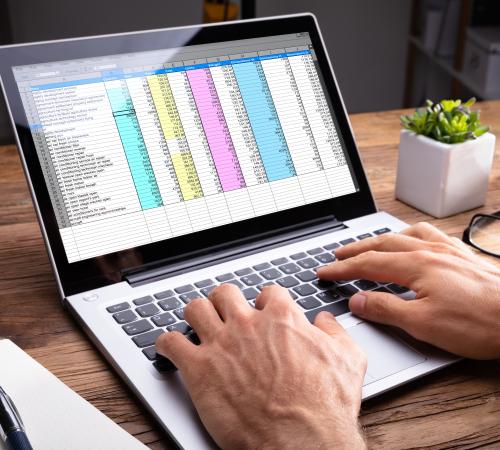Invoices form the backbone of business transactions. They record what’s been sold, to whom, and for how much, creating a paper trail for sellers and buyers. Whether you’re a florist, a consultant, or a café owner, understanding how to create and manage invoices can keep your finances organised and help maintain healthy cash flow.
What is an invoice?
An invoice is a document issued by a seller to a buyer that outlines the products or services provided, their quantities, and the amount owed. Think of it as a formal payment request documenting the transaction for both parties. Invoices can help you track sales, maintain accurate financial records, and encourage timely payments. They can be particularly important for tax purposes, cash flow management, and maintaining professional relationships with your clients.
Types of invoices
There are various types of invoices, each serving different purposes.
- Standard/sales invoice: The most common type sent after goods or services are delivered
- Pro forma invoice: A preliminary bill sent before providing goods or services
- Interim invoice: Used for ongoing work where you bill at different stages
- Final invoice: Marks the completion of a project and requests final payment
- Recurring invoice: Sent at regular intervals for ongoing services
- Credit note: A negative invoice used when refunding or reducing a client’s balance
- Tax invoice: Contains tax-specific information for VAT-registered businesses
- Commercial invoice: Used in international trade to calculate duties and taxes.
When do I need to write an invoice?
You need to issue an invoice when you sell a product or service to another business. If you and your customer are registered for value-added tax (VAT), you must use a VAT invoice (external link). Invoices are not typically required for B2C (business-to-consumer) purchases or exempt or zero-rated sales.1 (external link)
For example, if your bookshop sells to individual customers, you typically don’t need to provide invoices. However, if you’re supplying books to a school or business, you might need to issue an invoice, especially if you’re VAT-registered. Similarly, a massage therapist might not invoice individual clients but may need to invoice a corporate client who books regular wellness sessions for employees.2 (external link)
Various UK legislation and regulations govern VAT, most notably the Value Added Tax Act 1994 (external link)and the VAT Regulations 1995. (external link) Annual Finance Acts have introduced changes to VAT rules and rates as recently as 2024 (external link).
For more information, see GOV.UK’s VAT guide (external link).
What should I include in an invoice?
Every invoice should include certain key elements to be legally compliant and professional, such as:
- A unique invoice number for reference
- Your business name, address, and contact information
- Your VAT registration number (if applicable)
- The customer’s name and address
- A clear description of the products or services supplied
- The date the goods or services were provided
- The date of the invoice
- The amount(s) charged
- VAT amount (if applicable)
- The total amount due
- Payment terms and accepted payment methods.3 (external link)
Requirements vary depending on your business and the type of transaction.
For instance, a solicitor might include details about billable hours and case references, whereas a bakery supplying cafés might focus on quantities, product types, and delivery dates.
Invoice payment types
Offering various payment options can make it easier for your clients to pay promptly.
Common payment methods include:
- Bank transfer: The most common B2B (business-to-business) payment method, where the client transfers the amount directly to your business account
- Credit/debit card: This is convenient for many businesses, though there are processing fees
- App payments: Services like PayPal, Square, or Stripe offer digital payment options
- Cash: This is less common for B2B transactions but is still used by some smaller businesses
Each payment method may have different processing times and fees, so consider what works best for your business model and cash flow needs.
Invoice payment terms
Providing clear payment terms on your invoices can help set expectations and improve your cash flow.
Common payment terms include:
- Payment in advance (PIA): Requires customers to pay before receiving goods or services. This is common for custom work, like a tailor creating bespoke suits or a graphic designer starting a project.
- Net payment: Specifies the number of days the customer has to pay after receiving the invoice. Common periods include Net 7, Net 30, and Net 60 (where Net 7, for instance, means payment is due within 7 days).
- End of Month (EOM): Payment is due by the end of the month in which the invoice was issued.
- Month Following Invoice (MFI): Payment is due at the end of the month following the invoice date.
- Stage payment: Payments are made at different times throughout a project. For example, architects often use stage payments for large projects, receiving portions of their fee as different phases are completed.
Clearly stating your payment terms on every invoice and discussing them with clients before starting work can help prevent misunderstandings and save you from chasing late payments.
How to send an invoice
There are several ways to send invoices, each with its own advantages and considerations:
- Post: Traditional paper invoices sent by mail can be appropriate for certain clients who prefer physical documentation. However, postal invoices can take longer to arrive, cost more to send, and get lost in transit.
- Email: Sending invoices as PDF attachments via email is quick and free. Most clients now use this option.
- Online invoicing software: Dedicated platforms like QuickBooks, Xero, or FreshBooks allow you to create, send, and track invoices all in one place. These systems can automatically send payment reminders, accept online payments, and sync with your accounting software.
- Accounting software with invoicing features: Full accounting packages can include invoicing capabilities.
When choosing a method, you might consider your clients’ preferences, your volume of invoices, and how much tracking and automation you need. Many small businesses start with email invoices and switch to more sophisticated systems as they grow.
Disclaimer:
At Hiscox, we want to help your small business thrive. Our blog has many articles you may find relevant and useful as your business grows. But these articles aren’t professional advice. So, to find out more on a subject we cover here, please seek professional assistance.




